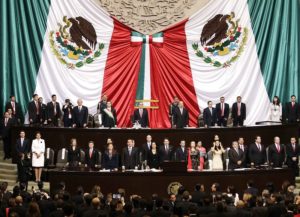* I’m quite impressed with the dramatic change in direction pretty much everywhere in the West on the immigration issue.
First Brexit, then Trump, freed up discussion of immigration. What they exposed is the bankruptcy of the case for immigration: it comes down to nothing more than an accusation of racism in its opponents. Nothing more than pure taboo supports it. Every fact runs against it.
But taboos come and go. They can’t survive open challenge.
We have three more years of Trump, at the very least. I think we’ll end with a very different culture surrounding immigration from the one we started with.
* Despite having a strong leaning towards the left at times, the arrogant French (not really a put down) don’t seem to hate themselves, or their cultural legacy, in the same way the rest of the West does. BLM can only thrive when a significant portion of the majority population truly hates itself (culturally.)
* Bannon has pulled his endorsement of Paul Nehlen over his retweeting of cartoon that says “It’s ok to be white”. Bannon was never alt-right or even close, but he’s now virtue signaling big time to put space between himself and alt-right/white nationalism.
Bannon is a big supporter of Jewish tribalism and thinks blacks are prime candidates for civic nationalism, but whites who don’t hate themselves are beyond the pale for him.
* Reading the piece so you guys don’t have to: yes, saying that he’s reading CoC and it’s okay to be white is the extent of Nehlen’s inflammatory activity. You have to see it through a Jewish lens: if Nehlen had stolen Palestinian land or bombed a Palestinian neighborhood or shot a Palestinian kid, that’d be one thing, but reading books and tolerating whiteness is a whole ‘nother level.
* Nehlen had been on Fash The Nation during his first try at unseating Paul Ryan. I had found that odd and thought that it might have been a misstep on his part. Then he went on FTN a 2nd time and indicated that he was a regular listener.
I like that he memes. I do think that he should have stuck to #ItsOkToBeWhite. That hashtag is genius in that it’s very, very easy to defend in the eyes of normal people.
I’m not sure why he’s hitting the JQ so strongly, especially since his stance on the “fellows” is that he’s willing to respect them if they respect him. Sounds a bit like Ann Coulter’s stance, who just dog whistles her stance on the “fellows” and doesn’t shout it out.
* Why don’t progressive men and women executives hire all of these put-upon women at a discount price and crush the competition? There must be a veritable surfeit of talented women executives out there just dying to get their chance. Yet, no one seems willing to tap that ass – sorry, that well of talent.

